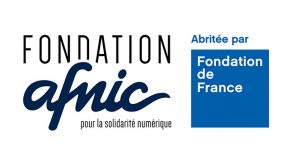1. Background
The subject of the “new extension” or “new gTLD program” has created a great deal of debate and questioning since June 2008, when ICANN announced its plans to allow companies and public institutions to have their own extension – or Top Level Domain (TLD).
There have been many discussions over the last three years between the stakeholders concerned, first and foremost between governments and the representatives of trademark holders. The players are particularly worried about the fact that the already substantial risks concerning the infringements of their rights may further increase due to the proliferation in the number of TLDs After frequently heated debate, it is only now that ICANN feels sufficiently ready to initiate a tightly controlled, formal launch process.
2. Analysis
To date, obtaining one’s own extension is of concern above all to legal entities, with an entry ticket of $ 185,000 per project to meet the investigation costs of each case. More than one hundred such projects have already been announced.
To demonstrate the interest in these new business opportunities, the following projects have been cited:
- geographic, linguistic or cultural gTLDs, corresponding to the names of cities or regions, such as .PARIS, or .BZH for the Breton language and culture;
- community gTLDs, such as .GAY, .INDIGI, or .GREEN, designed to federate members of specific communities under their respective flags;
- generic gTLDs, targeting dictionary terms such as .SPORT, .FILM, or .BANK etc. ;
- brand or business gTLDs, backed by market players on their own behalf or for their flagship brands.
The number of projects made public is expected to grow significantly in the future, current estimates indicating several hundred similar projects are under discussion.
The long awaited official schedule has now been communicated:
- 12 January to 12 April 2012: the window for applications that must be complied with in order to be included in the first round of applications (ICANN has yet to say when the subsequent rounds will be held);
- month-end April 2012: publication of the list of projects submitted, so that governments and rights holders can submit their objections;
- November 2012: end of the initial assessment of the files and the start of the contracting procedures and technical test phase.These various factors suggest that the very first new TLDs could be online by the middle of 2013. The schedule for applications is now known and fixed. Businesses and local authorities can now establish their work plan, from policy analysis upstream (should we submit an application to obtain a TLD, and how?) through to the completion of the application. Not to mention the selection of a provider of technical solutions and registry services capable of accompanying applicants throughout the application process and managing the TLD when it has been obtained.
The lead-times are relatively short: only a few months for a project that may be of strategic importance for its backers.
There are many reasons why a company or a local authority may wish to have its own TLD:
- For marketing purposes, because having their own TLD allows registrants to organise their own naming policy on the Internet and to have shorter URLs.Existing TLDs will continue to be invaluable assets in the naming policy of the registrants of future TLDs, although ultimately they may no longer have the “flagship” role they have today;
- For legal reasons, because once the TLD is well known by the public, the company or local authority will have an “official Internet Domain Name Space” over which they will have absolute legal control.Attacks by third parties on other TLDs than the official TLD will have less strategic importance, although they should not be totally ignored;
- For reasons of security: a single TLD is easier to secure than dozens of domain names managed by x different providers around the world. The countdown is on!
3. Find out more
About Afnic
Afnic is the acronym for Association Française pour le Nommage Internet en Coopération, the French Network Information Centre. The registry has been appointed by the French government to manage domain names under the .fr Top Level Domain. Afnic also manages the .re (Reunion Island), .pm (Saint-Pierre and Miquelon), .tf (French Southern and Antarctic Territories), .wf (Wallis and Futuna) and .yt (Mayotte) French Overseas TLDs.
In addition to managing French TLDs, Afnic’s role is part of a wider public interest mission, which is to contribute on a daily basis, thanks to the efforts of its teams and its members, to a secure and stable internet, open to innovation and in which the French internet community plays a leading role. As part of that mission, Afnic, a non-profit organization, has committed to devoting 11% of its Revenues from managing .fr Top Level Domain to actions of general interest, in particular by transferring €1.3 million each year to the Afnic Foundation for Digital Solidarity.
Afnic is also the back-end registry for the companies as well as local and regional authorities that have chosen to have their own TLD, such as .paris, .bzh, .alsace, .corsica, .mma, .ovh, .leclerc and .sncf.
Established in 1997 and based in Saint-Quentin-en-Yvelines, Afnic currently has nearly 90 employees.



